Hawaiian volcanoes - Part 1: Introduction
The population of Hawai’i has always lived with the dangers of volcanism. The natives linked natural phenomena with the doings of gods. Myths about the gods taught each new generation about their unstable environment and created the basis of religious and ethical codes, including many taboos, which helped the Hawai’ian people to endure their dangerous surroundings.
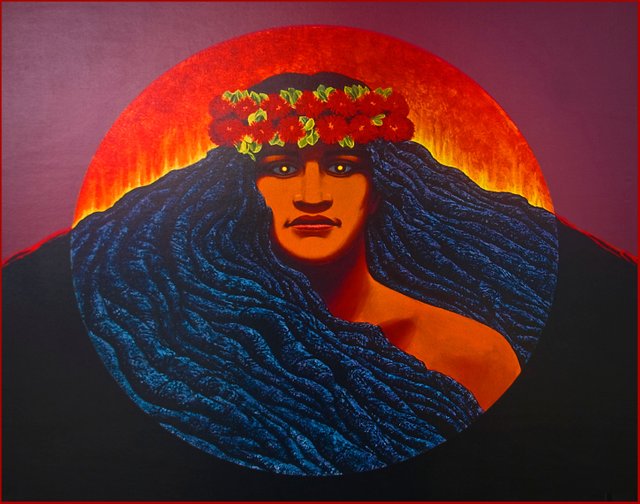
Painting showing the goddess Pele
flickr.com
In the Hawaiian belief, volcanic eruptions are caused by a fearsome deity named Pele, the goddess of fire. Many myths involving Pele were derived from observations of the natural changes generated by earthquakes and volcanoes. When annoyed, she would stamp her food, and the earth would shake. When enraged, she would hurl fiery boulders (volcanic bombs) or she would generate streams of molten lava that destroy everything in their path. Sometimes this lava would flow down into the ocean and create new land. Pele’s power was equaled only by that of her sister Nā maka o Kahaʻi, the goddess of the sea, who could quench Pele’s fires and erode the land created by her cooled hardened lava.
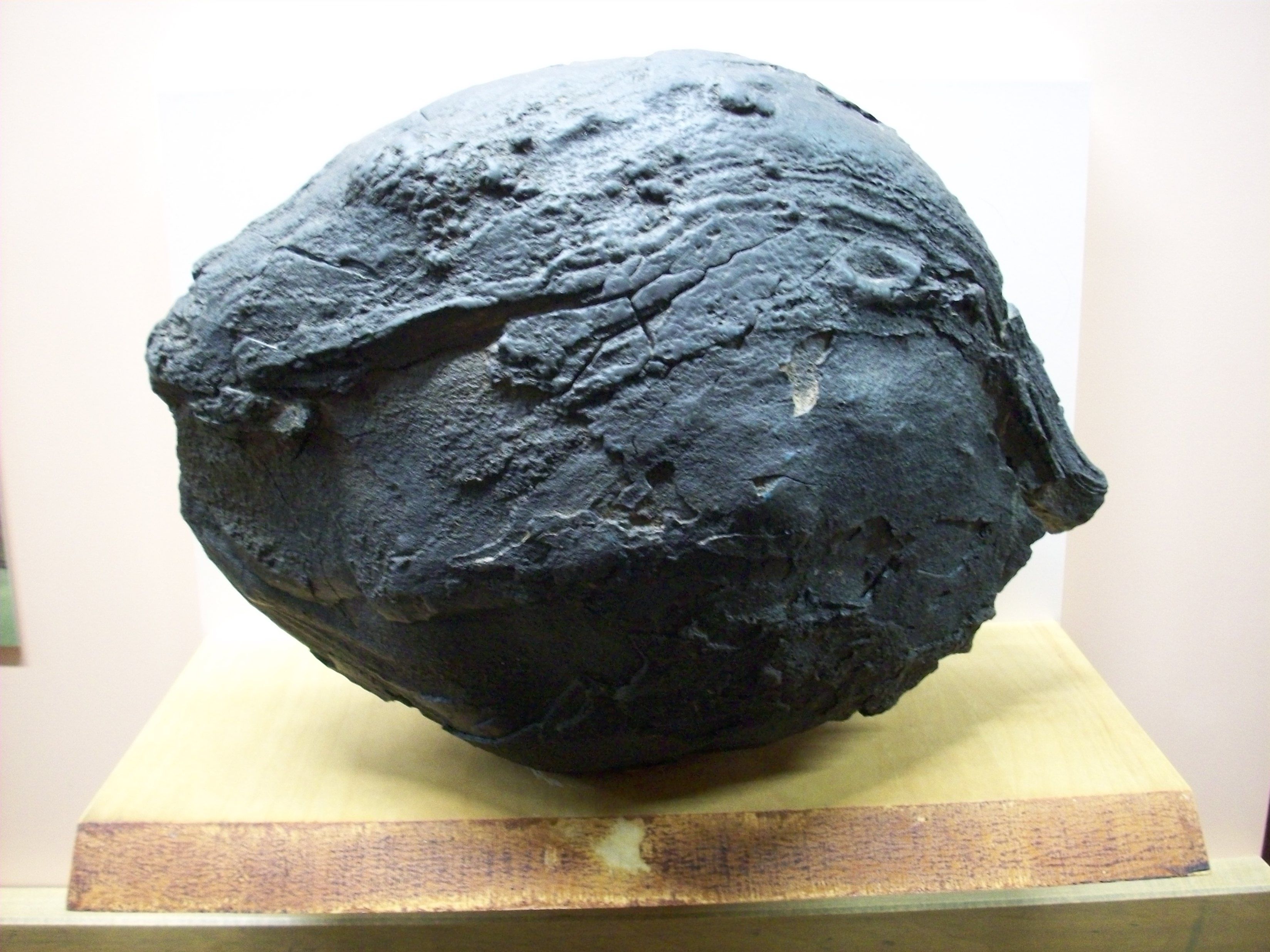
Volcanic Bomb
flickr.com
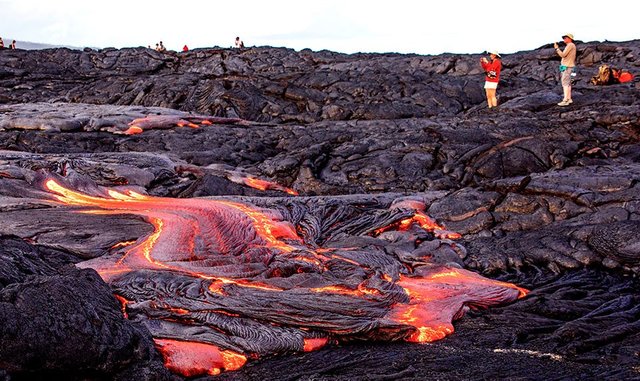
Lava flow from August 31, 2017 from the still active 61G lava flow
nps.gov
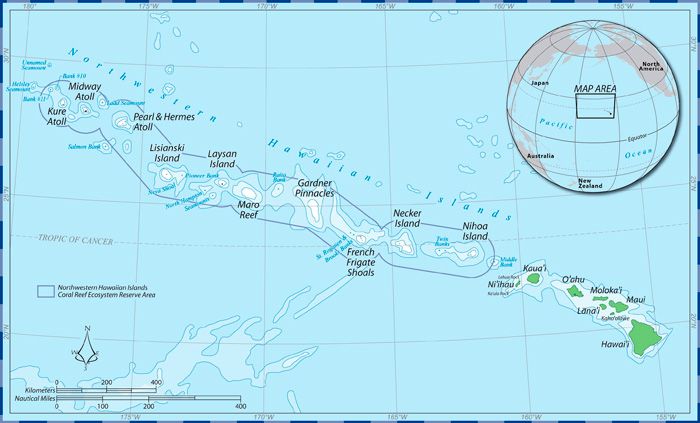
Hawaiian Islands
noaanews.noaa.gov
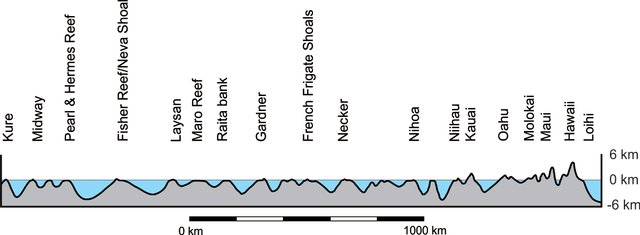
Topographic diagram of the different Hawai’ian Islands.
Modified after Stearns (1946)
The Hawaiian Islands form a northwest-southeast-trending archipelago that extends ca. 2,400 kilometers across the Pacific Ocean, from the Kure Atoll to the Island of Hawai’i itself.
The islands are the peaks of the Earth’s highest mountains, if measured from their base on the ocean floor. The Himalayas in Asia are, of course, the loftiest mountains on the planet. The peak of the Mount Everest has an elevation of 8,848 meters above sea level. The highest peak of the Hawaiian Islands is Mauna Kea (‘white mountain’, due to its snowy cap) located on the Island of Hawai’i, with 4,205 meters above sea level. But the ocean floor at its base is about 5,000 meters deep, making the true height of Mauna Kea more than 9,000 meters.
In terms of sheer mass, Mauna Loa is the world’s largest volcanic mountain. It is oval-shaped and about 100 kilometers long and 50 kilometers wide at its base on the ocean floor. At its summit is forms a large caldera, known as Mokuʻāweoweo.

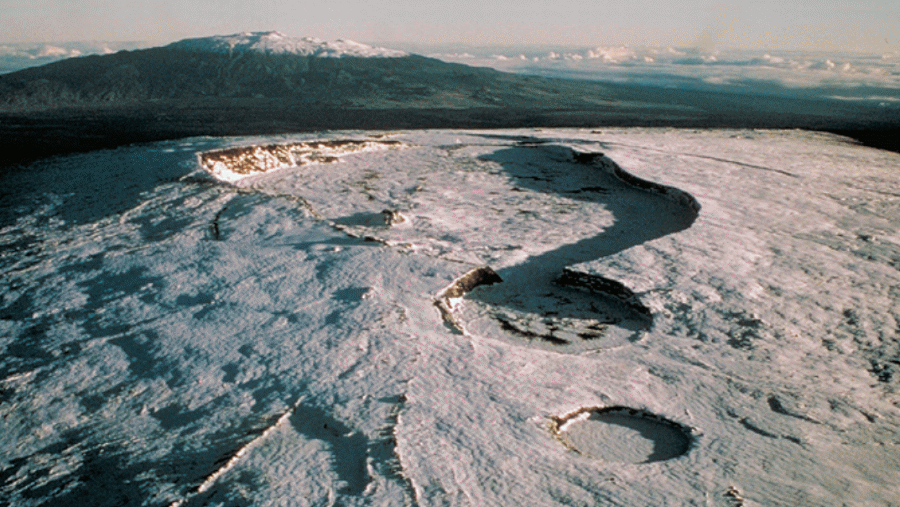
Top:Mauna Kea volcano on the Island of Hawai’i.
Bottom: Mokuʻāweoweo Crater.
Wikipedia.org
Hawaiian volcanoes were formed very slowly, when continuous outflow of lava over millions of years accumulated over great areas and created huge dome shaped mountains with gently sloping slides. Their shape is said to resemble a warrior’s shield lying flat with its convex side up, hence they are known as shield volcanos and are prototype for such volcanoes around the world.
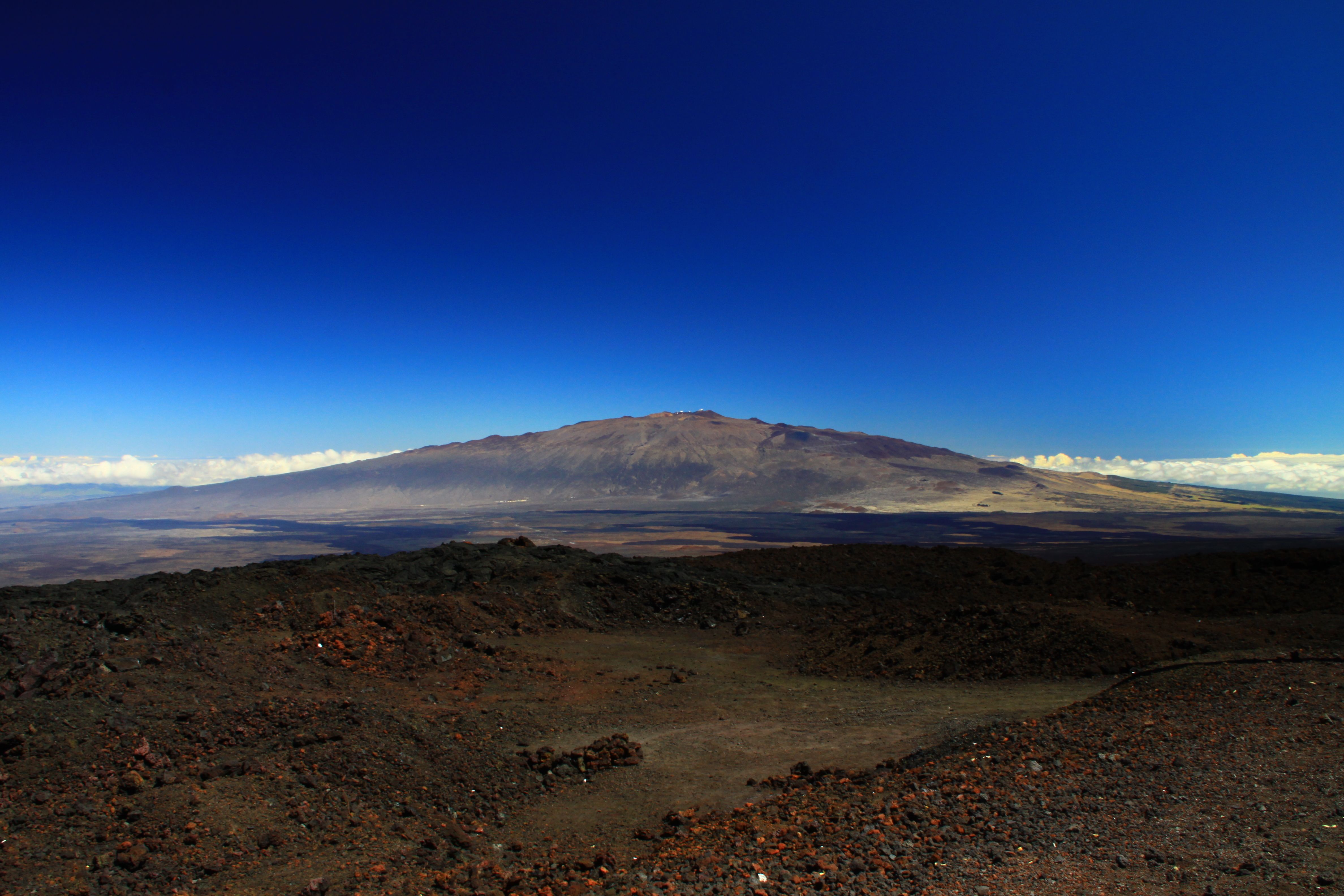
Mauna Kea, another great example for a shield volcano.
Wikipedia.org]( https://en.wikipedia.org/wiki/Mauna_Kea)
Hawaiian eruptions are occur as lava flows pouring from fissures in the flank of volcanoes. The span of an eruption can vary from days to months, with reports going up to several years. From time to time the lava will flow around and avoid certain areas. These islands of vegetation form little oases in a sea of lava are called kīpukas. They range in size from square meters to square kilometers and many of them preserve plants from which seeds and spores spread to barren lava fields, where they start life anew.
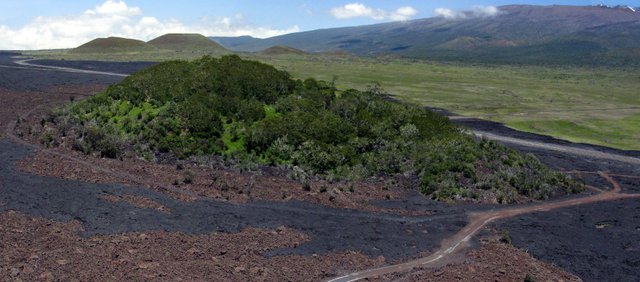
Example of a kīpuka
flickr.com
The lava is relatively fluid and flows down the mountainside in rivers that sometimes move as rapidly as 40 kilometers an hour. As the lava flows down the mountainside it begins to cool. The surface and the bottom of a lava flow cool first, shielding the moving lava inside from interaction with their surroundings. This forms tubes through which still hot, liquid lava can continue to flow. Some of these lava tubes are several meters wide
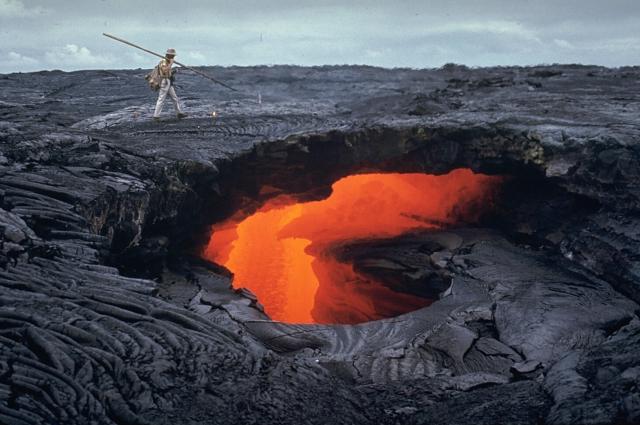
Lava tube from Mauna Ulu in October 1970
volcanoes.usga.gov
Most lava solidifies into either of two forms of basalt known by the Hawaiian terms ʻaʻā (pronounced ah-ah) and pāhoehoe (pa-hoy-hoy), which have been adopted by volcanologists worldwide. Aʻā has a rough, irregular surface that is extremely difficult to walk on (if you walk on it barefoot you will scream “ah ah” out of pain). Pāhoehoe lavas on the other hand typically form a smooth and, wavy surface with a ropy texture. When pāhoehoe lavas flow into the sea, they form masses of basalt that resemble piles of pillows and are, because of that termed pillow lavas.
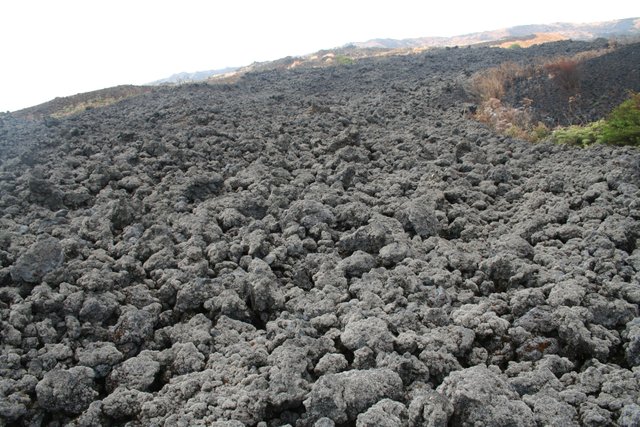
ʻAʻā lava flow. Wikipedia.org
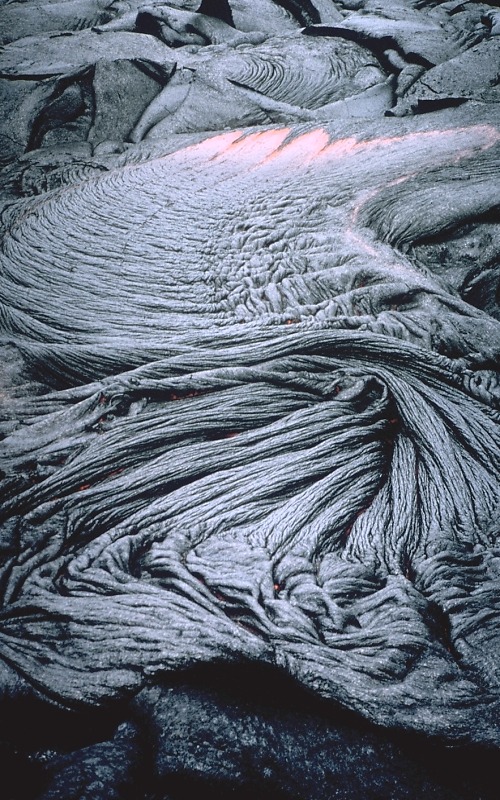
Pāhoehoe lava flow.
Wikipedia.org
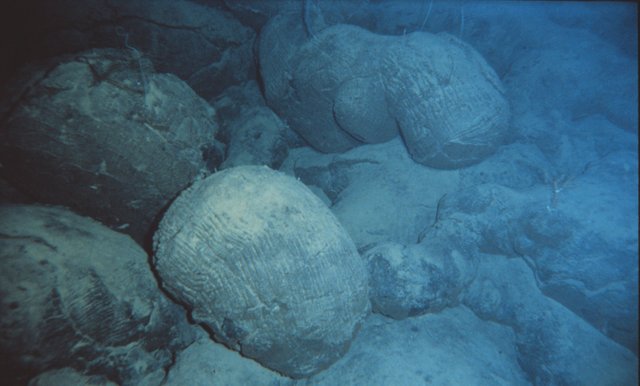
Hawaiian pillow basalts.
Wikipedia.org
After they are hardened into basalt, lava flows are highly permeable, letting rainwater soak quickly into the ground. This prevents the formation of well-defined streams on the young islands. Larger streams are present on the older, now volcanically inactive, islands. There they have eroded deep valleys. All Hawaiian Islands are rich in fresh groundwater, to the benefit of life and though some areas of the Hawaiian Islands are bleak and barren because of volcanic activity, they are mostly mantled with lush tropical vegetation.
Sources
- Stearns, H.T. (1946). Geology of the Hawaiian Islands. Hawaii Division of Hydrography Bulletin 8
- Tilling, R.I., Heliker, C., and Swanson D.A. (2010). Eruptions of Hawaiian volcanoes— past, present, and future: U.S. Geological Survey General Information Product 117
- Zeilinga de Boer, J. and Sanders, D.T., (2002). Volcanoes in Human History: The Far-reaching Effects of Major Eruptions. Princeton University Press
https://www.flickr.com/photos/alishav/3262788634
https://www.flickr.com/photos/22711505@N05/16528063216
https://www.flickr.com/photos/nat507/37125582253
https://www.flickr.com/photos/tbenedict/3478431059
http://www.noaanews.noaa.gov/stories2006/s2644.htm
https://www.nps.gov/havo/planyourvisit/lava2.htm
https://volcanoes.usgs.gov/volcanoes/kilauea/geo_hist_mauna_ulu.html
https://de.wikipedia.org/wiki/%CA%BBA%CA%BB%C4%81-Lava
https://en.wikipedia.org/wiki/Lava#.CA.BBA.CA.BB.C4.81
https://en.wikipedia.org/wiki/Mauna_Kea
https://en.wikipedia.org/wiki/Mauna_Loa
https://en.wikipedia.org/wiki/Pillow_lava
You received a 80.0% upvote since you are a member of geopolis and wrote in the category of "geopolis".
To read more about us and what we do, click here.
https://steemit.com/geopolis/@geopolis/geopolis-the-community-for-global-sciences-update-4
You just planted 0.21 tree(s)!
Thanks to @sooflauschig
We have planted already 4833.66 trees
out of 1,000,000
Let's save and restore Abongphen Highland Forest
in Cameroonian village Kedjom-Keku!
Plant trees with @treeplanter and get paid for it!
My Steem Power = 20741.41
Thanks a lot!
@martin.mikes coordinator of @kedjom-keku